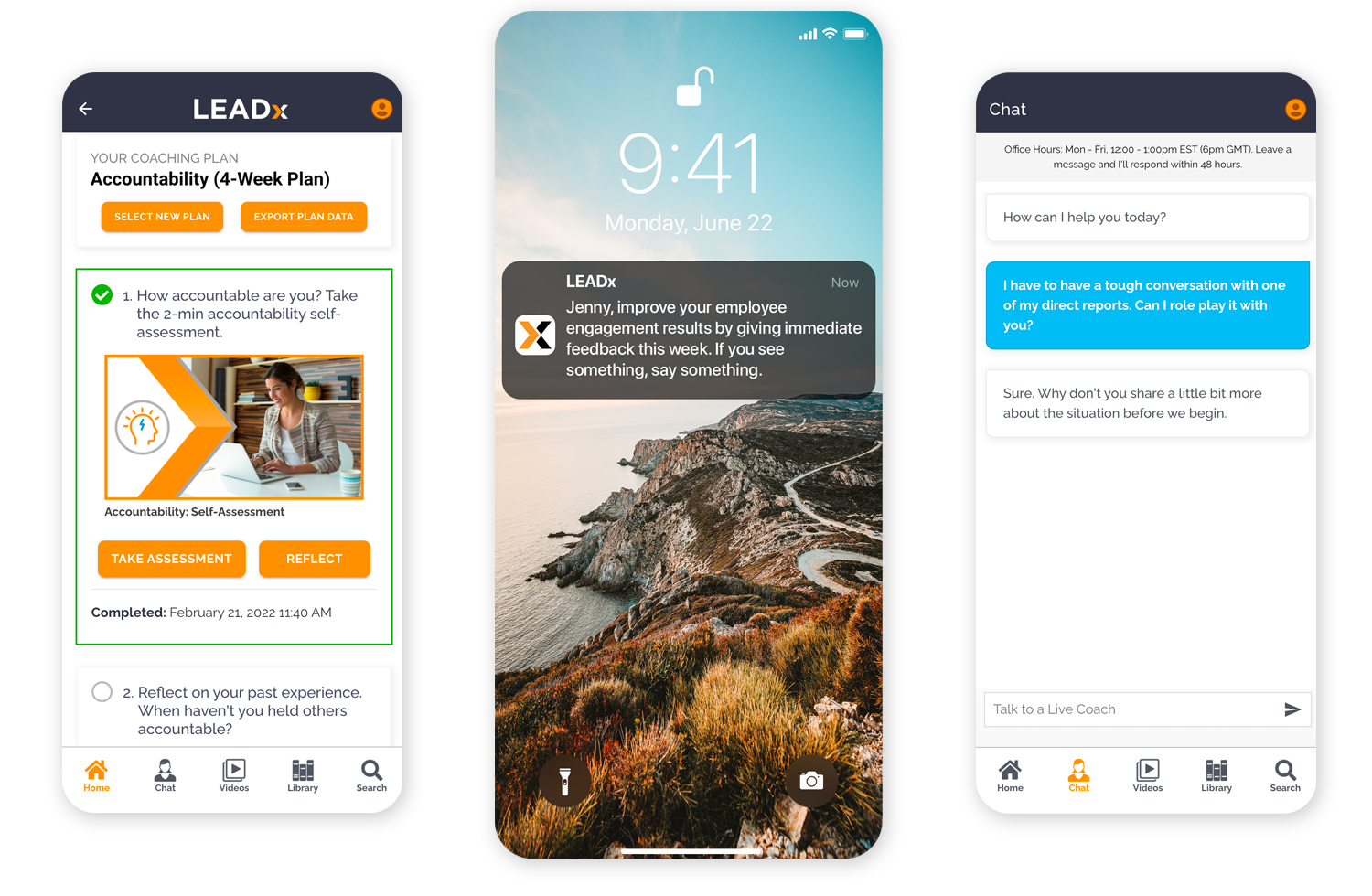
Servant Leadership: Definition, Examples, Characteristics
Despite being five decades old, “servant leadership” is a philosophy that is still earning quite a bit of buzz—because it’s so effective. Research has shown that servant-led companies are more likely to outperform competitors, retain employees, and develop future leaders than companies that operate out of more traditional “command-and-control” leadership styles.
Robert K. Greenleaf first introduced the servant leadership philosophy in his seminal essay The Servant as Leader in 1970, which quickly gained a foothold with business and leadership audiences across the globe.
The idea of servant leadership dawned on Greenleaf while reading Herman Hesse’s novel Journey to the East. The story centers on a group of men journeying on a pilgrimage together. One of the main characters in the saga is a servant named Leo. Leo accompanies the group doing menial tasks but helps keep morale high throughout—until he disappears. Without Leo, the group ultimately falls apart and abandons their pilgrimage. However, several years later, Leo reappears—and the narrator makes a stunning discovery. Leo, despite his servant’s attitude, is actually the noble leader of the organization that sponsored the pilgrimage in the first place. Despite being a fictional character, Leo is the original servant leader.
The publication of The Servant as Leader started the modern servant leadership movement which quickly made its way into classrooms and boardrooms around the world. Greenleaf would go on to found The Greenleaf Center for Servant Leadership—a nonprofit dedicated to advancing the awareness, understanding, and practice of servant leadership—before his death in 1990.
Since, we’ve identified the defining characteristics of servant leadership in countless leaders throughout history—Jesus Christ, Mahatma Gandhi, Mother Teresa, Nelson Mandela, and Martin Luther King Jr. being some of the most famous and oft-cited. But what does it mean to be a servant leader today, and what does servant leadership look like in practice?
Servant Leadership Definition
Servant leaders, as the term suggests, are “servants” first and leaders second. Their desire to serve is natural and innate; while stepping into a leadership role is a conscious choice. At its core, being a servant means taking the responsibility of meeting others’ needs upon yourself. In a business setting, that means making an individual’s growth and development—personally and professionally—first priority.
The “leadership” aspect of servant leadership, as servant leadership expert Dr. Ken Blanchard puts it, is all about vision, direction, and goals. Most leaders find themselves in positions of leadership in the first place because their foresight is better than most. Greenleaf writes that foresight is a “better than average guess about what is going to happen when in the future.”
Servant leaders, then, empower and serve their followers to achieve a shared vision for the future—effectively “leading from behind.”
Nelson Mandela illustrated this concept in his autobiography, Long Walk to Freedom: “ A leader…is like a shepherd. He stays behind the flock, letting the most nimble go out ahead, whereupon the others follow, not realizing that all along they are being directed from behind.”
“The upside-down pyramid” is another way experts describe servant leadership. In a traditional hierarchy, the CEO and upper levels of management are at the top of the pyramid, and those underneath—including middle management and frontline employees—are responsible for catering to their needs. Servant leadership flips this model on its head, putting employees and customers at the top.
“You’ve got to turn that pyramid upside down, so now you work for your people, who eventually work for your customers,” said Dr. Blanchard, author of Servant Leadership in Action, in a podcast interview. “Once the vision, and direction, and goals are clear, the job of the leader is to help people live according to the vision of values and goals and be successful. Now you're working for them. You're the head cheerleader.”
Servant Leadership Characteristics
Pat Falotico, CEO of the Robert K. Greenleaf Center for Servant Leadership and former IBM executive leader, says that all servant leaders have a natural desire to serve, hold themselves accountable for the growth of others, and operate out of a drive to create a better world.
What’s more, Greenleaf writes in The Servant as Leader that the best way to “test” a servant leader is asking if the people they serve, “while being served, become healthier, wiser, freer, more autonomous, more likely themselves to become servants?”
Greenleaf also offers a few characteristics that exemplify servant leaders in his essay:
- Servant leaders respond to problems by listening to understand. Servant leaders are excellent active listeners. In stark contrast to “listening to respond,” “listening to understand” requires the listener to put all of his energy toward absorbing what the speaker is saying, rather than formulating a response while she is still talking.
- Servant leaders approach people with acceptance and empathy. Servant leaders unconditionally accept their followers and seek to empathize with them. “The servant always accepts and empathizes, never rejects,” Greenleaf writes. However, Greenleaf is careful to point out that this doesn't mean the leader should unconditionally accept subpar work, but rather the whole person—flaws and all.
- Servant leaders take time for themselves. In essence, servant leaders know that when their energy is depleted, they won’t be at their best for the people around them. Greenleaf calls this “pacing oneself for appropriate withdrawal.” Servant leaders constantly ask themselves what they need to do in order to serve best.
- Servant leaders are excellent forecasters and vision communicators. Servant leaders are adept at making predictions and setting goals to achieve outcomes. Most leaders have the gift of foresight, but servant leaders are especially skilled at leading people into the future from alongside or behind them. “The best leaders are clear,” wrote Greenleaf. “They continually light the way, and in the process, let each person know that what they do makes a difference.”
- Servant leaders are perceptive and aware. Servant leaders “see things as they are.” Greenleaf writes that those who “move with narrow perception miss opportunities for leadership.” Perceptiveness requires being fully present in the current moment, rather than obsessing over the past or things to come.
Servant Leadership Examples
You don’t have to look very far to find examples of servant leadership throughout history—Jesus Christ, Mahatma Gandhi, Abraham Lincoln, Nelson Mandela, Mother Teresa, and Martin Luther King Jr. being some of the most well-known.
A few modern examples of servant business leaders include:
- Herb Kelleher – Former CEO of Southwest Airlines known for putting employees first
- Cheryl Bachelder – Former CEO of Popeyes Louisiana Kitchen who turned the brand around by serving the people who had invested the most in Popeyes
- Art Barter – CEO of Datron World Communications, Inc. who is intentional about leveraging employee’s strengths to drive performance
- Jack Welch – Beloved former CEO of General Electric who wrote, “before you are a leader, success is all about growing yourself. When you become a leader, success is all about growing others.”
Servant Leadership Pros and Cons
The outcomes of a servant-led organization will vary, but positive results of servant leadership can include:
- Increased trust and autonomy across the organization
- Customer satisfaction and loyalty
- Higher employee engagement
- Improved employee confidence in decision-making
- A strong leadership pipeline
But, like every management and leadership philosophy, servant leadership has downsides, including:
- Time-consuming to implement across an organization
- Confusing and uncomfortable for employees and leaders accustomed to other leadership styles
- Lack of clarity about formal authority can cause conflict and misalignment
- Some employees may try to exploit or take advantage of servant leaders
Servant Leadership Training
When it comes to developing servant leaders, there are many practical skills that organizations can provide leadership training on. These include:
- Effectively giving feedback. Servant leaders hold themselves accountable to their employees’ growth. Feedback—both positive and constructive—is crucial to helping employees reach their potential.
- Active listening. Servant leaders are masters of active listening, which involves attentively taking in what someone is saying in conversation and then paraphrasing what they said to ensure mutual understanding. The key is resisting the urge to give advice—the goal is to listen to understand, not problem-solve.
- Delegating. Servant leaders empower people to tackle challenges that will stretch and grow them. This means learning how to delegate tasks and projects. If leaders don’t delegate, they will artificially hold back the performance of their team to only ever be as good as the leader is.
- Navigating conflict. Disagreements are a natural part of team dynamics, and servant leaders are adept at turning confrontation into collaboration. They see difficult conversations as opportunities for learning, rather than something to be avoided.
- Coaching. The servant leader and leader-as-a-coach have a lot in common, including their approach to management. Coaches and servant leaders prefer asking questions to giving advice, believing that people already have the answers inside of themselves.






